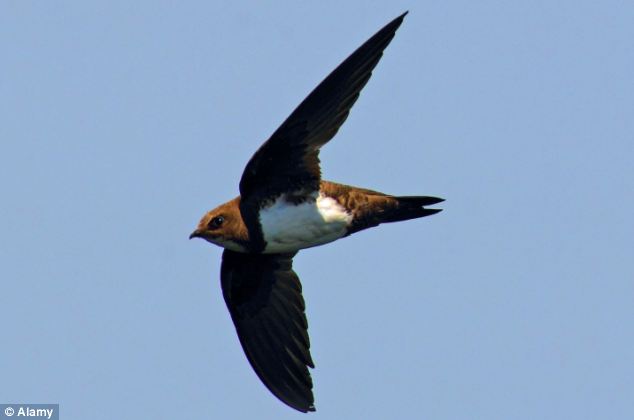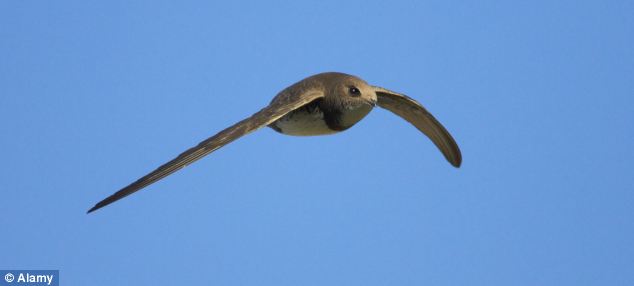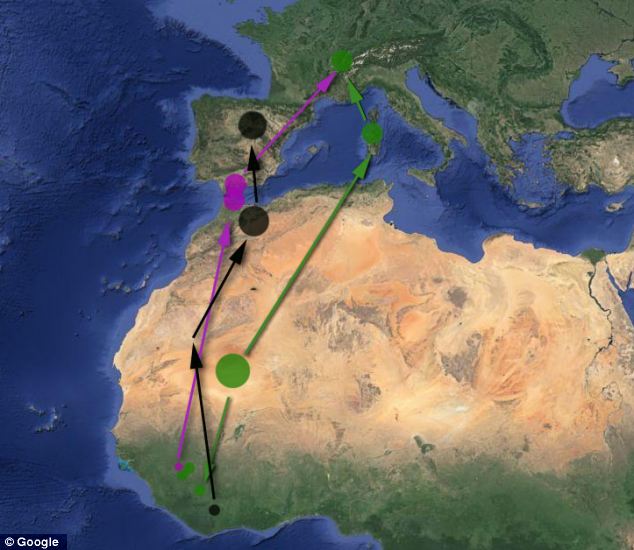- Scientists found that three Alpine swifts travelled 1,240 miles non-stop
- The birds were found to eat and drink while in the air by Swiss researchers
- Instead of resting at night, data collected suggested they carried on
glidingResearchers who tracked a group of migrating birds have discovered that they flew for 200 days non-stop between Africa and Europe. Record breakers: Scientists say that a 1,240-mile flight carried out by three Alpine Swifts is the longest recorded flight made by any bird
Record breakers: Scientists say that a 1,240-mile flight carried out by three Alpine Swifts is the longest recorded flight made by any bird
Scientists say that the 1,240-mile flight carried out by three Alpine Swifts is the longest recorded flight made by any bird.
Although experts have speculated that a related species, the common swift, remains airborne for much of the year, the latest research is the first to provide data over such a long period.
A team from the Swiss Ornithological Institute and the Bern University of Applied Sciences strapped tiny electronic monitoring devices to six alpine swifts before they flew south for the winter.
When they returned north again, the team recaptured three of the birds and downloaded the data from the devices.
According to the LA Times, ornithologist Felix Liechti said that he did a double-take when he saw the data.
It showed that the birds did not stop moving from late September until early spring.
Despite the team's initial of the results, they found that the birds didn't land to rest or sleep, but instead spent much of the night gliding and eat while still airborne.Much of their diet consists of aerial plankton, bugs and spiders that are swept into the sky by high winds. Constantly on the go: Researchers found that the birds didn't rest at night but merely stopped flapping their wings as much
Constantly on the go: Researchers found that the birds didn't rest at night but merely stopped flapping their wings as much
The birds are able to skim lakes and rivers while in flight for liquids.
What the scientists were unable to discern is why the birds spend so long in the air.
Mr Liechti said: 'We can only speculate as to what the profit is of staying airborne all the time.
'Is it avoiding predation? Parasites? We don't know.'




They just like getting high?